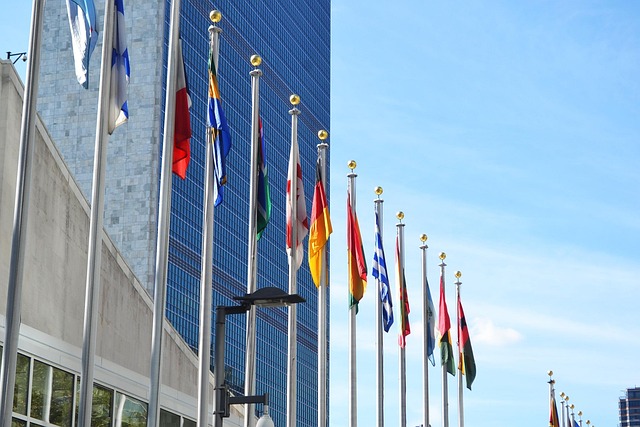
The International Plant Treaty: Why It Matters Today | Pillars
While food security and farming innovation undeniably depend on fertile fields, they also require open access to plant genetic diversity. And that’s precisely the purpose of the essential agreement: the International Treaty on Plant Genetic Resources for Food and Agriculture (ITPGRFA), a global agreement aimed at sharing seeds, genes, and knowledge so we can collectively adapt our crops to new challenges – known more simply as the International Plant Treaty.
Pepe’s Story
The history of the ITPGRFA begins in the hills of rural Spain, a young boy named José ‘Pepe’ Esquinas, born 1945, spent his childhood collecting melon and tomato seeds from neighbours’ farms, not for science, but for their different plant verities.
“When I was little, there were so many varieties of everything… You’d go from one farm to the next and find completely different tomatoes, melons, peppers.” – José ‘Pepe’ Esquinas, The Super-Seeders
Years later, one of those seeds, gifted to him by a farmer in Las Hurdas, turned out to carry genetic resistance to a devastating plant disease. That small moment — a seed passed hand to hand — would come to symbolise Pepe’s life’s work: protecting agricultural biodiversity and the rights of farmers. Known today as one of the architects of the International Plant Treaty, Pepe’s story is one of quiet persistence in the face of political resistance, and it’s one of many that The Super-Seeders explores in more depth.
A Global Seed-Sharing Pact
Launched by the FAO in 2001 and effective since 2004, the treaty brings together more than 150 countries in a Multilateral System (MLS). The MLS covers 65 of the world’s most vital food and forage crops, including wheat, rice, maize, and beans – crops that account for 80% of all human plant consumption. Rather than requiring complex bilateral agreements between every country or institution, the MLS enables open exchange between all parties. In fact, as of September more than 6.1 million samples had been shared for research, training and breeding between users of the MLS.
Fair Benefit-Sharing
The International Plant Treaty aims to balance access with equity. Breeders using shared materials will either release new varieties into the public domain or contribute a share of commercialisation revenue to a Benefit-Sharing Fund. This fund supports conservation projects, training programmes, and local seed systems in developing countries, helping to close the gap between those who steward agricultural biodiversity and those who profit from it.
“No country is self-sufficient in terms of genetic resources. Geographical and intergenerational dependency on genetic resources for food and agriculture is very high — and access to them continues to be a prerequisite for effective agricultural research and breeding.” – José Esquinas, Climate Change and Genetic Resources
The Treaty in the News
Recently, in June 2025, the International Plant Treaty partnered with the International Olive Council, supporting the conservation of historic cultivars in climate-vulnerable regions, such as Morocco’s olive groves, where traditional varieties face mounting pressure from rising temperatures and shifting growing conditions. The agreement also supports the integration of olive genetic resources into the treaty’s MLS, encouraging international collaboration in breeding and research. It’s a reminder that, far from being a static policy document, the treaty continues to evolve in response to environmental realities and the needs of its member countries.
New Science, New Pressures
The International Plant Treaty was designed around physical seeds and not necessarily the digital information extracted from them. One of the most urgent challenges now facing the treaty is how to handle Digital Sequence Information (DSI): the genomic data that allows scientists to study and manipulate plant traits without needing the seeds themselves. While this accelerates research, it also complicates benefit-sharing frameworks. If a company uses public genomic data to create a profitable variety, should the original seed provider, often from the Global South, benefit?
This debate has been central to the work of Michael Halewood, a longtime negotiator who has spent years navigating the legal tensions between the treaty and the Convention on Biological Diversity (CBD). In countless meeting rooms from Rome to Geneva, Halewood has helped bridge divides between scientists, diplomats, and communities with very different stakes in genetic data. Now, he’s working to revise the treaty in light of two major issues: its limited crop list — just 65 food and forage species — and its lack of provisions for DSI.
Meanwhile, others are looking beyond existing frameworks entirely. Sophien Kamoun, a plant pathologist and genomics expert, and James Canham, a data strategist, recently launched GetGenome — an open-access platform for sequencing crop diversity, designed to democratise access to plant genomic data. While not a replacement for treaty-level governance, it reflects a growing push for transparency, collaboration, and global participation in the use of genetic information.
Who’s Joining In?
In early 2025, South Africa became the 154th country to join the treaty, reaffirming their commitment to global seed sharing and multi-stakeholder conservation. Meanwhile, the treaty’s governing body is set to finalise reforms before the end of 2025, potentially expanding crop coverage, tightening DSI rules, and updating benefit-sharing frameworks .
As the world searches for solutions to food scarcity and climate chaos, this treaty ensures we do it together, and fairly.
